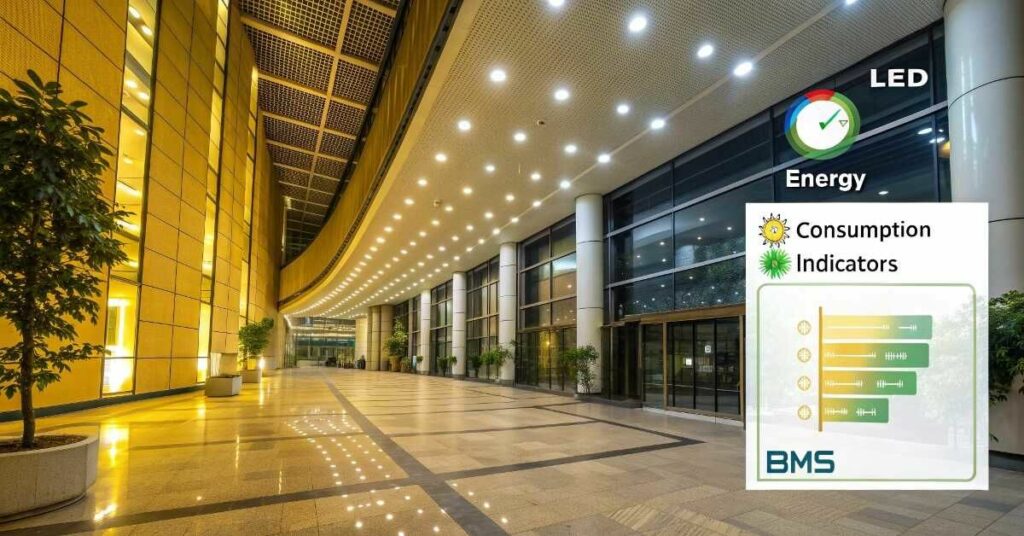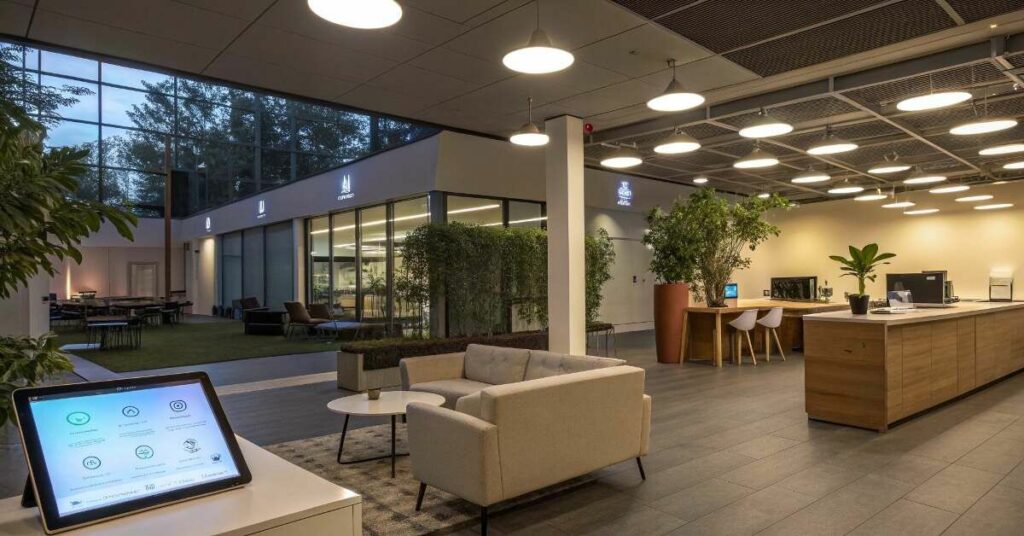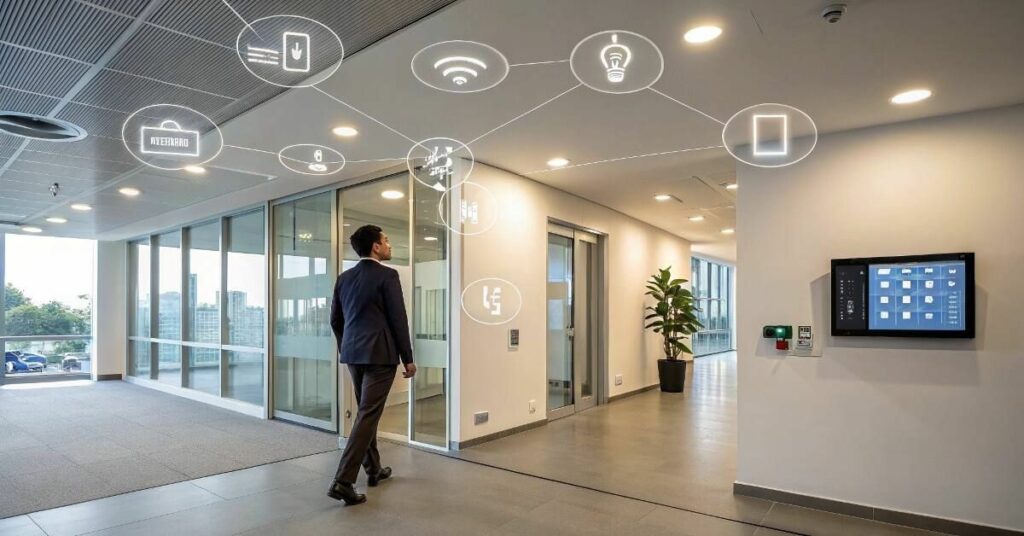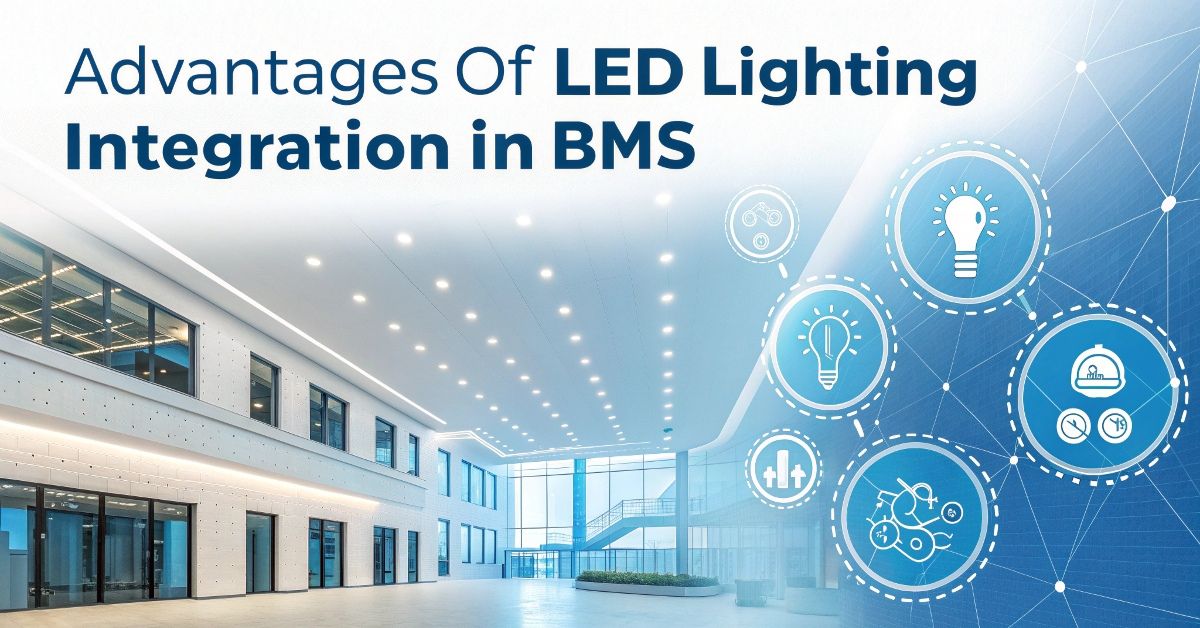With LED lighting integration, there is potent smart control in a BMS (Building Management System). The lighting can also be self-regulated by time, occupant or natural light. This brings the right balance of comfort and energy saving- manually.
LEDs are also very cost effective. They use a lot less electricity compared to the conventional lighting. In addition, they have a long life span and thus replace less and maintain at cheaper rates in the long run.
Another great success is sustainability. With LED lighting, carbon emission is lowered and green building objectives are facilitated. When BMS is integrated, energy consumption can be monitored and streamlined easier, making the buildings more environmentally friendly.
Table of Contents
ToggleIntroduction to LED Lighting in BMS
LED lighting is ideal to work with Building Management Systems to make smarter energy use. It enables structures to cut down on wastages and enhance comfort. The lights may reduce or increase automatically according to real time demands. Such intelligent arrangement results in improved control and efficient performance.
This integration assists in automatizing, tracking, and optimizing the lighting to never seen before levels. Facility managers have the ability to monitor use, make adjustments and reduce wasteful energy consumption. This in the long run means less costs and more environmentally friendly building environment.
Energy Efficiency at Its Core

LED uses very minimal energy compared to traditional lighting. This in itself causes significant energy savings. The system is smarter when coupled with a BMS. BMS can be used to optimize lighting schedules to avoid wastage of energy. Lighting is only switched on when necessary and switched off when not necessary. It is a smart organization, which improves performance and minimizes wasteful costs.
Lower Maintenance and Longer Lifespan
The LED lights have a longer life span of years, which decreases the replacement rate. Fewer burnouts equate to fewer time and money wasted on repair. Maintenance is also easy when remote monitoring is present, which can be achieved with BMS integration. The system identifies faults in their early stages hence problems are rectified before they become bigger. This keeps lighting in a smooth operation with minimal interference.
Enhanced Comfort and Occupant Experience

BMS enables adjustable brightness of lights to be comfortable and efficient. The amount of light can be adjusted according to occupancy, time of day or task type. This produces a comfortable indoor atmosphere that helps concentration and health. Depending on whether it is a well-lit working place or a relaxing lounge, lighting adjusts to accommodate the needs of people.
LED lighting assists in natural circadian rhythms and are adjustable. It has the ability to imitate daylight effects so that individuals are more awake during the day and calm in the night. This makes one happier and less tired in the workplace or home.
- Lighting adjusts automatically for different zones.
- Brightness changes to match daily schedules.
- Warm or cool tones support activity or relaxation.
- Personalized settings enhance user satisfaction.
Real-Time Monitoring and Control
Facility managers will be able to manage the lighting in a remote manner using a single dashboard. With a couple of clicks, they can control brightness, create schedules, or switch off zones which are not used. This increases speed and efficiency of daily operations. Real time data assists in timely response to any problem related to lighting. In case something goes wrong, the system notifies the team immediately and minimizes downtimes, leaving the performance smooth.
Seamless Integration with Other Systems

LED light can be easily synchronized with HVAC, security and occupancy sensors. This makes an interconnected building space that functions as a single intelligent unit. Sharing of data is carried out in systems to make them more comfortable and efficient. Intelligent switches switch off/ on the lights based on the room usage and the daylight. Consequently, the safety and convenience are not compromised and energy is saved.
Cost Savings Over Time
This saves a lot of money in terms of low energy bills and less maintenance. Compared to the traditional lights, LEDs consume less power and they are extremely long lasting. This reduces the monthly expenses as well as the need to replace it periodically. These savings will accumulate in the long run and will be a good decision to any building.
LED upgrade has utility rebates, smart incentives that come along with the way, and increase ROI. A lot of energy suppliers provide programs on a cash-back or discounting converting to LED lighting. Added together with the reduced running cost, this enhances long-term value as well as accelerates the payback.
Cost Factor | Traditional Lighting | LED with BMS |
Energy Consumption | High | Low |
Maintenance Frequency | Frequent | Rare |
Replacement Costs | Often | Minimal |
Utility Rebates/Incentives | None or Low | Available |
Return on Investment | Slow | Fast |
A Step Toward Greener Buildings
LED integration helps to achieve sustainability and green building. It also consumes less energy, it has long life and it produces fewer wastes. Energy use is even more efficient when utilized in combination with BMS. This will enable buildings to get environmental standards and certifications easily.
The operations are environmentally friendly as carbon footprint is reduced. The more power is not used, the less emission of the greenhouse gases. It is a minor adjustment that causes a major difference. LED lighting is one step closer to the cleaner and greener future of the buildings.
FAQ's
What are the advantages of LED lighting integration to a BMS?
It enables more intelligent control, minimizes energy wastage and improves performance of the entire system.
Is LED lighting able to reduce the energy cost of buildings?
Yes, LEDs consume less energy and they are compatible with BMS to save energy bills drastically.
Is it simple to monitor and control of LED lights?
Of course--BMS platforms provide remote access in real-time and intelligent scheduling.
Conclusion
The advantage of BMS LED lighting integration is sustainable, efficient and intelligent. All features are truly valuable, whether it is reduced energy consumption or enhanced comfort. Buildings are made less difficult to handle and less expensive to operate.
Other long-term objectives such as cost saving, and going green are also supported by this smart upgrade. It is future-proof with real time control and smooth automation. LED lighting with BMS is a wise step towards any modern building.

